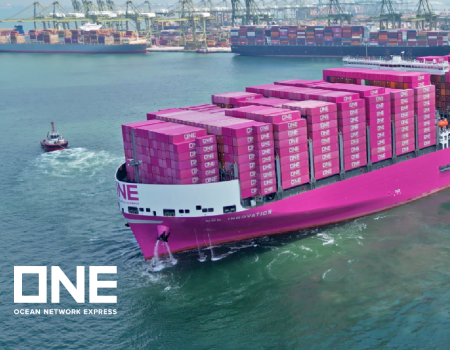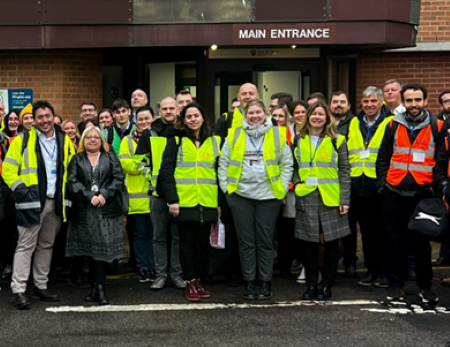Gordon Tutt, Chairman of the Association of Freight Software Suppliers, tells ITM about how new technology can help improve the running of Heavy Goods Vehicles
There have been a number of articles recently in both the national press and trade press outlining the difficulties the trade is experiencing in recruiting sufficient Heavy Goods Vehicle drivers.
One of my colleagues on the JCCC is Peter Cullum, who represents the Road Haulage Association. I discussed this matter with Peter after one of the meetings we had both attended and it is very clear that the RHA has serious concerns over the ability of its members to maintain the numbers of drivers needed to meet the increasing demands of industry and the freight and logistics sector in the coming years. The impact of driver shortages extends beyond just Heavy Goods Vehicles as there are a number of planned changes to legislation which will impact on smaller commercial vehicles.
I’ll try not to repeat some of the reports already covered in the press but just emphasise the point that significant numbers of HGV drivers are due to retire in the next five to ten years and their numbers are not being replaced. I have a good friend who has been a professional driver for over 40 years, driving HGV vehicles mostly in the fuel industry. He recently reached his 66th birthday and continues to work part time as his employer needs qualified drivers with his experience in order to continue operations. Fortunately my friend is fit and healthy and can still meet the physical and mental demands that are necessary when delivering fuel oil for his employer.
The recent changes to legislation covering HGV drivers together with the physical demands of the job often restricts many drivers from continuing to work as they get older.
It is therefore essential that the use of HGV vehicles and drivers is maximised and greater efficiencies in the operation of these vehicles are achieved in future. AFSS members are playing an ever increasing part in bringing about the efficiencies in developing new technology for this purpose.
As I mentioned in the last edition of the International Trade Magazine, Martin Goodwin from Airport Bureau Systems (ABS) gave a presentation on the introduction of ‘Pick’ and ‘Drop’ messages to AFSS members at our meeting in October. These are new messages being introduced at the airports in the UK in order to provide electronic information in advance of loads being delivered or collected. Having the ability for the transporter to provide advance notification to the ground handling agent or air carrier of the goods they are delivering or collecting, should enable these deliveries or collections to be handled more efficiently. Whilst there have been notable improvements to the service levels provided at some of the Ports as a result of this type of technology the same cannot be said about airports.
ABS have been pivotal in developing these messages on behalf of their customers some of who are the Ground Handling Agents at the majority of UK airports.
As the major CSP for the UK airports, CCS-UK is already supporting the transmission of the Pick and Drop messages in their test systems in order to enable Software companies to develop, test and demonstrate the use of these messages over the community’s networks. The further development of XML versions is being planned for next year. Dnata are the first ground handling agents to use these messages to improve vehicle handling at their UK locations.
At many sea ports and container terminals the use of technology has brought about significant improvements in the times taken to load and unload vehicles delivering or collecting freight. The CSPs at these locations recognised the need to minimise the delays to vehicles which has in turn brought about greater efficiencies not just for the vehicle operators but in the port as well.
The introduction of these messages within the Software Suppliers systems should also enable document processes to be speeded up and when combined with the transmission of Air Waybill data electronically to the carrier it should reduce significantly the time required by the handling agent to enter data into their systems.
Other areas of current development may also help bring about greater utilisation of the vehicles and in turn deliver savings to both the transporter and their customers.
One AFSS member, Transputec Ltd, is working on a development that will combine vehicle number plate recognition systems with the management of the reception and despatch doors of the warehouse or distribution depot. Having a combination of advanced information on what is loaded on the vehicle together with a system planning the management of the loading and unloading can not only provide improved service levels to the transporter but also enable improved utilisation of the warehouse or distribution depot.
The ability for any vehicle to maximise its capacity is another means of reducing costs to the transporter. There have been systems available to help combine loads from different operators for many years. There have also been utilities which enable transporters to utilise the capacity of their vehicles on return journeys where they would have otherwise returned empty. As mobile technology improves and the operation of these systems becomes more cost effective, the development of new systems combining vehicle tracking route planning and capacity utilisation will bring about further savings and efficiencies and help maximise the time of the HGV driver in the future.
Transport Exchange Group, who joined AFSS earlier this year, have a wide range of solutions and have recently expanded their portfolio to include ‘Haulage Exchange’. The use of systems such as Haulage Exchange enables vehicle utilisation and routing to be maximised which is vital for operators to remain competitive.
Haulage Exchange recently sponsored a round-table event discussing this subject. They believe they have a solution to the driver shortages by making better use of the collaborative ‘latent capacity’ that’s already in the market.
With the increased demand for on-line purchasing, the efficient delivery of goods to the buyers is a key factor and providing the means where the carrier can not only maximise their vehicle utilisation but plan the delivery and operation against very tight cost limits is critical.
With GPS and electronic mapping now a feature in our daily life new software is being developed to not only maximise the use and routing of vehicles but also provide the operator with statistical and real time data on the performance and operation of his vehicle. The ability to know where the vehicle is in its schedule provides numerous advantages to both the operator and their ultimate customer. As a consumer one has to be impressed with the level of service operated by some companies who can let you know not only the intended delivery time but also provide a pre alert by text or phone call as the vehicle nears its time of delivery. I know that I will be a return customer of at least two companies who delivered goods to my home recently who used similar systems.
Imagine the advantages to the warehouse operator or port if they not only know the load of the vehicle and the anticipated arrival time but that this can also be adjusted as a result of updates sent from the vehicle. The ability of the port or warehouse operator to manage their resources, man and machines in light of real time updates could result in massive savings.
Many AFSS Members provide a range of services and utilities specific to the needs of their customers. The continued development of their systems is driven by the needs of the industry and the drive to remain competitive. The ability to provide and receive advance electronic data is key in delivering these efficiencies. Many companies in the industry use the skills and experience of their software provider in the development of solutions to meet the increasing demands of the industry.
Look to your AFSS Software Supplier to help you find a cost-effective solution.
AFSS Membership is open to any company involved in providing software or systems to the Logistics Industry. Details of AFSS membership together with the 2014 Members Directory can be found on the AFSS web site.
In addition to the two meetings each year, AFSS issues a Newsletter twice a month to AFSS members. The newsletter provides an update to members on matters of interest as well as providing a summary of any meetings attended by AFSS.







